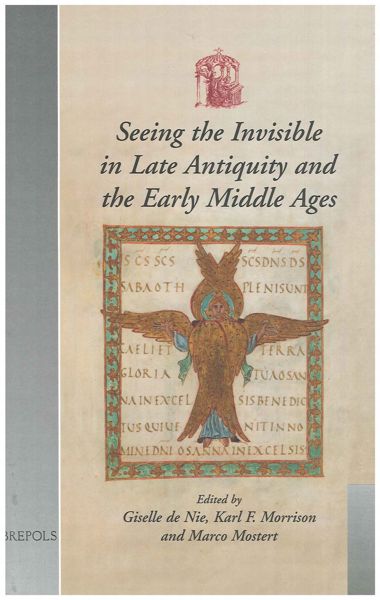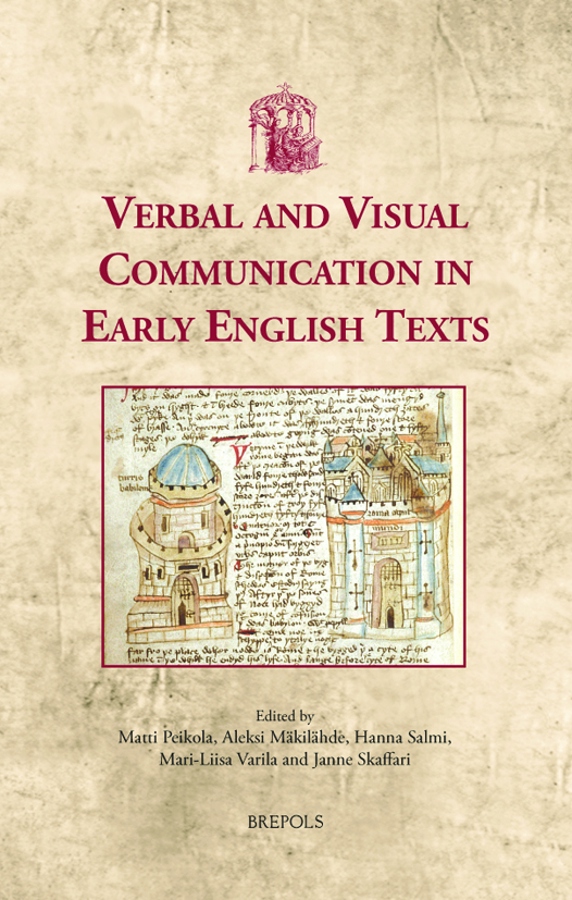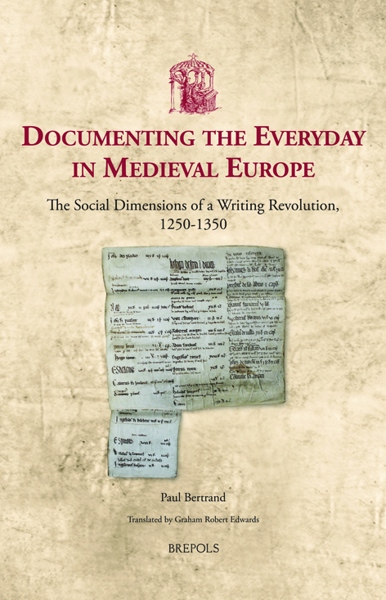
Verbal and Visual Communication in Early English Texts
Matti Peikola, Aleksi Mäkilähde, Hanna Salmi, Mari-Liisa Varila, Janne Skaffari (eds)
- Pages: 280 p.
- Size:156 x 234 mm
- Illustrations:30 b/w, 9 tables b/w., 11 Graphs
- Language(s):English
- Publication Year:2017
- € 90,00 EXCL. VAT RETAIL PRICE
- € 65,00 EXCL. VAT WEBSITE PRICE VALID UNTIL 31 Dec 2025
- ISBN: 978-2-503-57464-6
- Hardback
- Available
- € 90,00 EXCL. VAT RETAIL PRICE
- ISBN: 978-2-503-57465-3
- E-book
- Available
The volume innovatively combines book studies with linguistics to explore the interplay of verbal and visual/material communication in early English manuscripts and printed texts.
“Overall, the collection is a successful contribution to the interdisciplinary dialogue, and the individual essays present practical evidence of the types of scholarship that can be produced when we combine methodologies from historical pragmatics/discourse linguistics and history of the book materialist philology. It is this reviewer’s hope that edited volumes such as this one will promote future collaborations on a more global scale and widen disciplinary representation to include fields like art history and history of science.” (Lydia Yaitsky Kertz, in Manuscript Sudies, 4/1, 2019, p. 175-76)
“The editors of this fine collection of papers show where this insight can take us, and are to be congratulated on their achievement. These papers contribute to the ambitious recuperation of philology in the broadest sense, incorporating – and quite rightly – disciplines such as paleography, bibliography, codicology, textual criticism and historical linguistics that have in the past half-century diverged.” (Jeremy Smith, Journal of Historical Pragmatics, 22.2, 2021, p. 302)
When reading a text our understanding of its meaning is influenced by the visual form and material features of the page. The chapters in this volume investigate how visual and material features of early English books, documents, and other artefacts support – or potentially contradict – the linguistic features in communicating the message. In addition to investigating how such communication varies between different media and genres, our contributors propose novel methods for analysing these features, including new digital applications. They map the use of visual and material features – such as layout design or choice of script/typeface – against linguistic features – such as code-switching, lexical variation, or textual labels – to consider how these choices reflect the communicative purposes of the text, for example guiding readers to navigate the text in a certain way or persuading them to arrive at a certain interpretation. The chapters explore texts from the medieval and the early modern periods, including saints’ lives, medical treatises, dictionaries, personal letters, and inscriptions on objects. The thematic threads running through the volume serve to integrate book studies with discourse linguistics, the medieval with the early modern, manuscript with print, and the verbal with the visual.
Abbreviations
Preface
Part I: Discourse Linguistics Meets Book History
Disciplinary Decoding: Towards Understanding the Language of Visual and Material Features — MARI-LIISA VARILA, HANNA SALMI, ALEKSI MÄKILÄHDE, JANNE SKAFFARI, and MATTI PEIKOLA
Part II: Communicating through Layout
Discourse Variation, Mise-en-page, and Textual Organisation in Middle English Saints’ Lives — COLETTE MOORE
How the Page Functions: Reading Pitscottie’s Cronicles in Manuscript and Print — FRANCESCA L. MACKAY
Verbal and Visual Communication in Title Pages of Early Modern English Specialised Medical Texts — MAURA RATIA and CARLA SUHR
Quantifying Contrasts: A Method of Computational Analysis of Visual Features on the Early Printed Page — JUKKA TYRKKÖ
Part III: Communicating through Script and Typography
Stating the Obvious in Runes — YIN LIU
Labours Lost: William Caxton’s "Otiose" Sorts, c. 1472-1482 — ANYA ADAIR
Code-Switching, Script-Switching, and Typeface-Switching in Early Modern English Manuscript Letters and Printed Tracts — SAMULI KAISLANIEMI
Seeing is Reading: Typography in Some Early Modern Dictionaries — R.W. MCCONCHIE
Whose Letters Are They Anyway? Addressing the Issue of Scribal Writing in Bess of Hardwick’s Early Modern English Letters — I.J. MARCUS
Bibliography
Index




